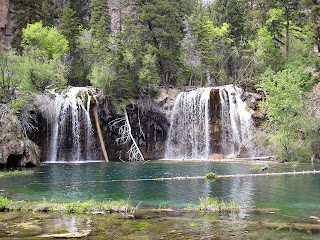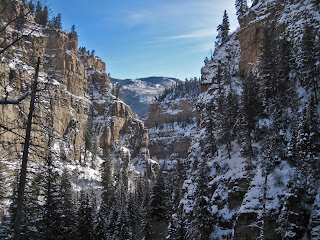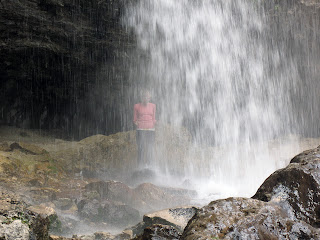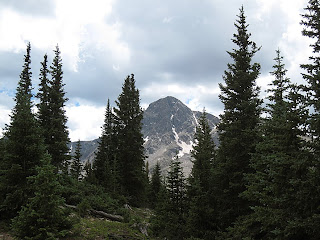 |
| Quandary Peak from Highway 9 |
DIRECTIONS
 |
| Near 14,000' on Quandary's East Slopes |
ROUTES
East Slopes (standard)
The standard East Slopes route on Quandary Peak is one of the easiest and most popular routes on a Colorado 14er. A good trail takes you all the way to the summit. From the trailhead, follow the well-defined trail as it winds through the forest for a few miles to treeline at 11,500'. Downed lumber can sometimes impede your progress in this section but shouldn't be too much of an issue. From treeline continue up the trail along a rounded ridgeline to a flat section at 13,100'. From here the angle steepens. Switchback up the final 1,000' to Quandary's excellent summit.
Cristo Couloir
This snow couloir is short and straightforward. From the Blue Lake trailhead, locate the couloir. It is the most apparent and leftmost of three climbable couloirs on Quandary's South Face. The couloir is short, just barely over a mile, but ascends 2,500', so be ready for some steep climbing. Avalanches are a strong possibility, so carefully consider the snow conditions before beginning. This route is an unpleasant scree mess when the snow has melted out.
Inwood Arete
This technical alpine route is an interesting way to make more of a challenge out of a mountain that has a reputation for being easy. From the trailhead hike along a climber's trail to a lake near 12,000'. The arete begins here. You can do a direct start at 5.6-5.7 or head east to an easier 5.4 start. Climb mostly 5.easy climbing past some towers (do not climb the towers) until you are deposited on easier terrain (still class 3 and 4) above somewhere around 13,500'. Expect runnouts, loose rock, and some tricky routefinding on this route.
East Slopes (standard)
The standard East Slopes route on Quandary Peak is one of the easiest and most popular routes on a Colorado 14er. A good trail takes you all the way to the summit. From the trailhead, follow the well-defined trail as it winds through the forest for a few miles to treeline at 11,500'. Downed lumber can sometimes impede your progress in this section but shouldn't be too much of an issue. From treeline continue up the trail along a rounded ridgeline to a flat section at 13,100'. From here the angle steepens. Switchback up the final 1,000' to Quandary's excellent summit.
Cristo Couloir
This snow couloir is short and straightforward. From the Blue Lake trailhead, locate the couloir. It is the most apparent and leftmost of three climbable couloirs on Quandary's South Face. The couloir is short, just barely over a mile, but ascends 2,500', so be ready for some steep climbing. Avalanches are a strong possibility, so carefully consider the snow conditions before beginning. This route is an unpleasant scree mess when the snow has melted out.
Inwood Arete
 |
| The final push to the summit of Quandary |
TRIP REPORTS
Quandary Peak: Late Spring in the Colorado Mountains
An account of a successful ascent of the East Slopes route of Quandary in June 2010. With heavy snow still on the trail, the route was considerably more difficult than when it is dry in summer.
LINKS
Inwood Arete on Summitpost.org
Inwood Arete on mountainproject.com
Follow us on Twitter!
Copyright notice: This website and all its contents are the intellectual property of www.coloradomountaineering.com and its authors. None of the content can be used or reproduced without the approval of www.coloradomountaineering.com.
Climbing and mountaineering are dangerous!! Please see the DISCLAIMER page
For information about how to contact us, visit this link
Quandary Peak: Late Spring in the Colorado Mountains
An account of a successful ascent of the East Slopes route of Quandary in June 2010. With heavy snow still on the trail, the route was considerably more difficult than when it is dry in summer.
LINKS
Inwood Arete on Summitpost.org
Inwood Arete on mountainproject.com
Visit THE ARCHIVE: A list of most of our articles sorted by department











